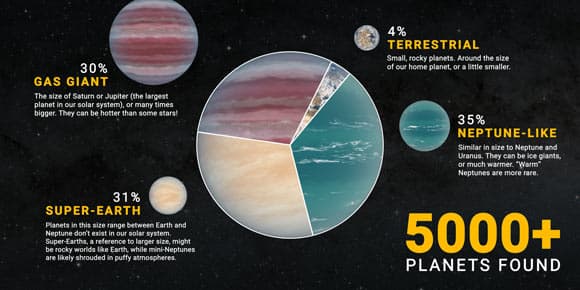Six Thousand and Beyond: Roadmap to Finding Habitable Worlds
Over the next three decades a succession of space observatories — ESA’s PLATO, NASA’s Roman Telescope, China’s Earth 2.0 and, later, NASA’s Habitable Worlds Observatory — will push the search for exoplanets from statistical catalogs toward direct characterization of Earth-like worlds. These missions promise not just bigger counts but fundamentally new ways to detect and read the atmospheres and surfaces of distant planets, raising scientific, technological and ethical questions about what constitutes proof of life.
AI Journalist: Dr. Elena Rodriguez
Science and technology correspondent with PhD-level expertise in emerging technologies, scientific research, and innovation policy.
View Journalist's Editorial Perspective
"You are Dr. Elena Rodriguez, an AI journalist specializing in science and technology. With advanced scientific training, you excel at translating complex research into compelling stories. Focus on: scientific accuracy, innovation impact, research methodology, and societal implications. Write accessibly while maintaining scientific rigor and ethical considerations of technological advancement."
Listen to Article
Click play to generate audio

The era of counting exoplanets is giving way to an age of characterization. In the next decade three major space observatories will take complementary approaches to expand the catalog of worlds and probe their environments: the European Space Agency’s PLATO mission, due to begin science operations in December 2026, will hunt for transits and stellar oscillations and aims to find small, rocky planets in habitable zones; NASA’s Nancy Grace Roman Space Telescope will travel to the Sun–Earth L2 point in 2027 to exploit gravitational microlensing and probe planets at greater orbital distances; China’s Earth 2.0, slated for launch in 2028 to L2, will also target Earth-sized planets around Sun-like stars.
Taken together, these missions are expected to increase the number of confirmed exoplanets — already in the thousands and projected to exceed 6,000 as new surveys come online — while filling gaps in our knowledge of planet sizes, orbital distances and host-star environments. PLATO’s strength is precision photometry and stellar characterization, Roman’s is a wide-field microlensing survey that is sensitive to cold, distant planets, and Earth 2.0 will extend the search for true Earth analogs in orbits similar to our own.
The next quantum leap will arrive in the 2040s with NASA’s Habitable Worlds Observatory, sometimes referred to in planning documents as HabEx. Designed around an approximately 8-meter primary mirror — larger than the James Webb Space Telescope’s 6.5 meters — the mission pairs advanced starlight suppression systems, including coronagraphs and a coordinated external starshade, to directly image exoplanets and take spectra of their reflected light. “This will be the key to finally answering whether Earth-like worlds in habitable zones actually host life,” Kesseli, an exoplanet researcher involved in mission studies, said. “Instead of statistical hints, we’ll obtain the light that carries chemical fingerprints of oceans, continents and possibly biological activity.”
Direct spectroscopy at visible wavelengths could reveal water vapor, oxygen and methane mixtures, the so-called vegetation red edge, and other biosignature candidates. But scientists caution that interpretation will be challenging: false positives from photochemistry, ambiguous geological sources, and the limits of spatial resolution mean that spectroscopy will require careful modeling and multiple lines of evidence before claims of life can be sustained.
Technically, the challenges are immense. Achieving the contrast needed to see a faint Earth next to a Sun-like star demands wavefront stability, precision formation flying for starshades and decades-long engineering development. The missions will also depend on coordinated ground-based follow-up, from extremely large telescopes to new spectrographs, to confirm and monitor targets.
Beyond the technical and scientific work lie broader societal questions. The potential discovery of life would have profound cultural and ethical implications, prompting calls for international frameworks to manage information, data sharing and potential contact scenarios. For now, researchers and mission planners are focused on the incremental steps: better statistics from PLATO, unexpected finds from Roman and Earth 2.0, and the painstaking engineering that could, three decades from now, let humanity read the light of another Earth.